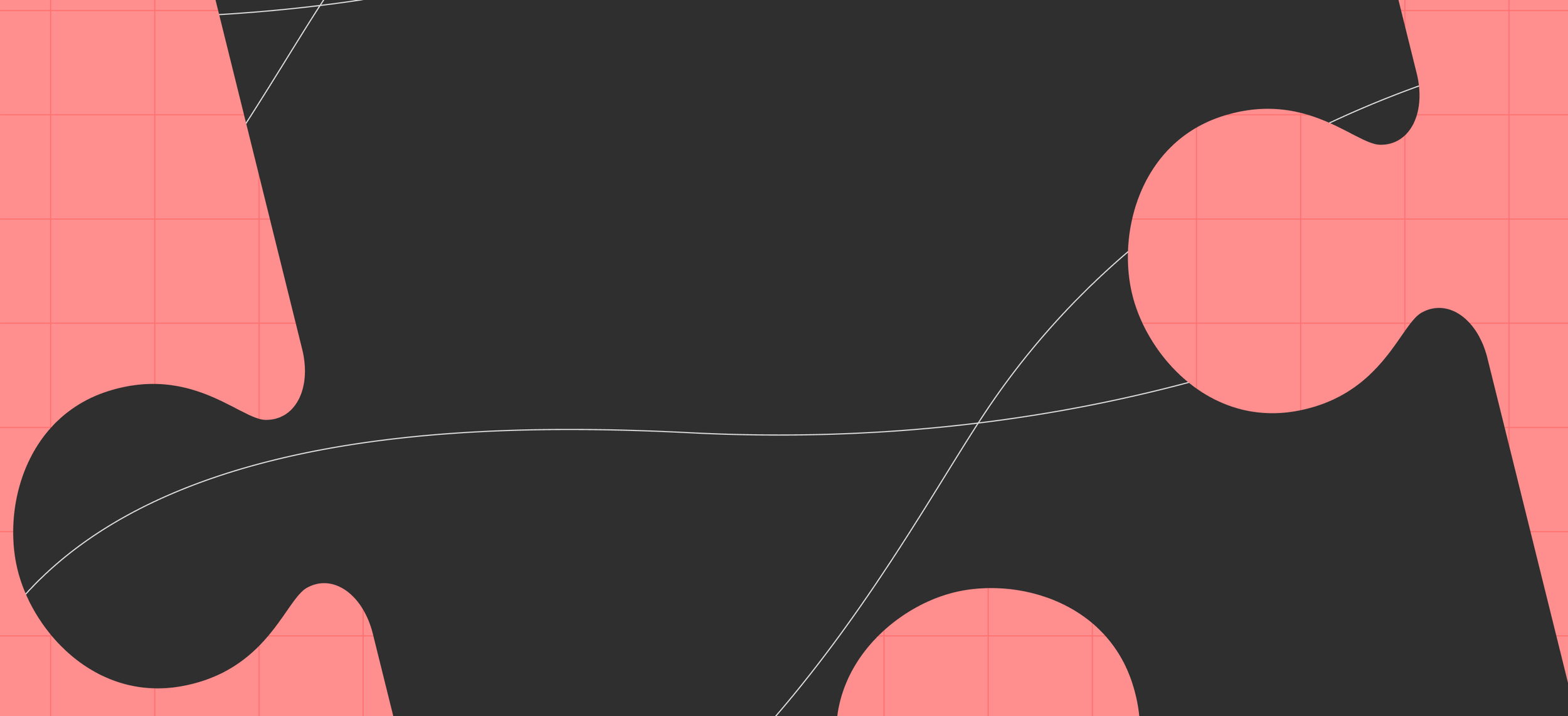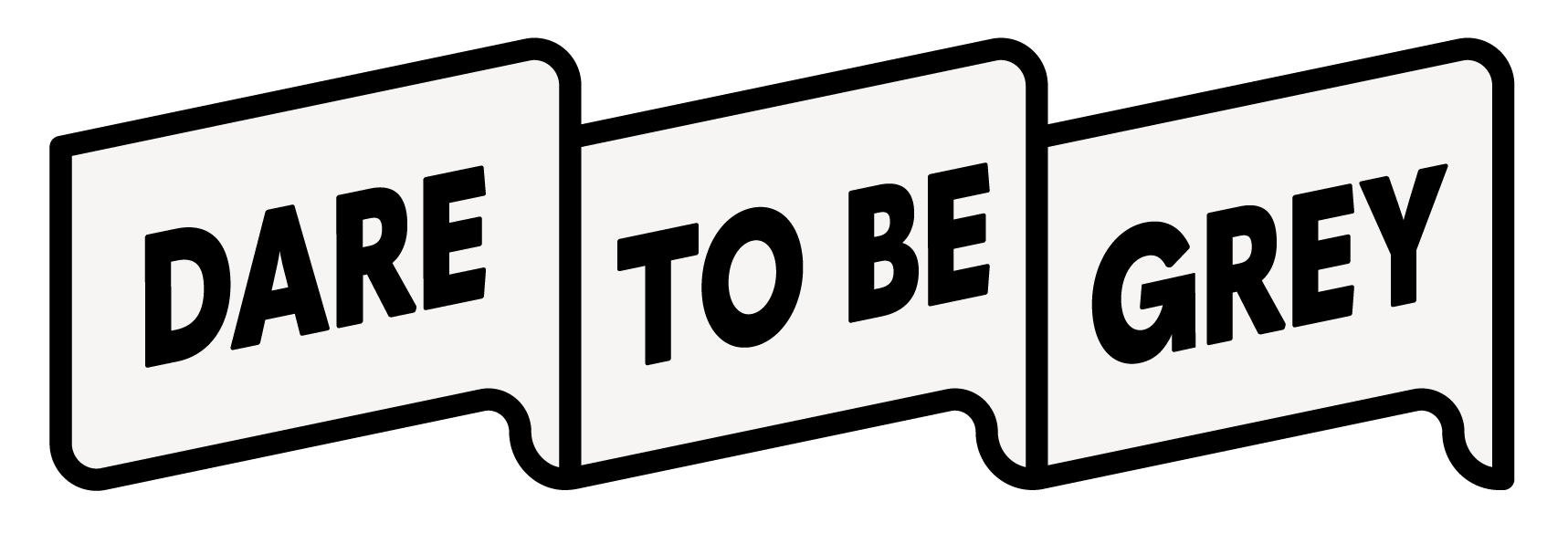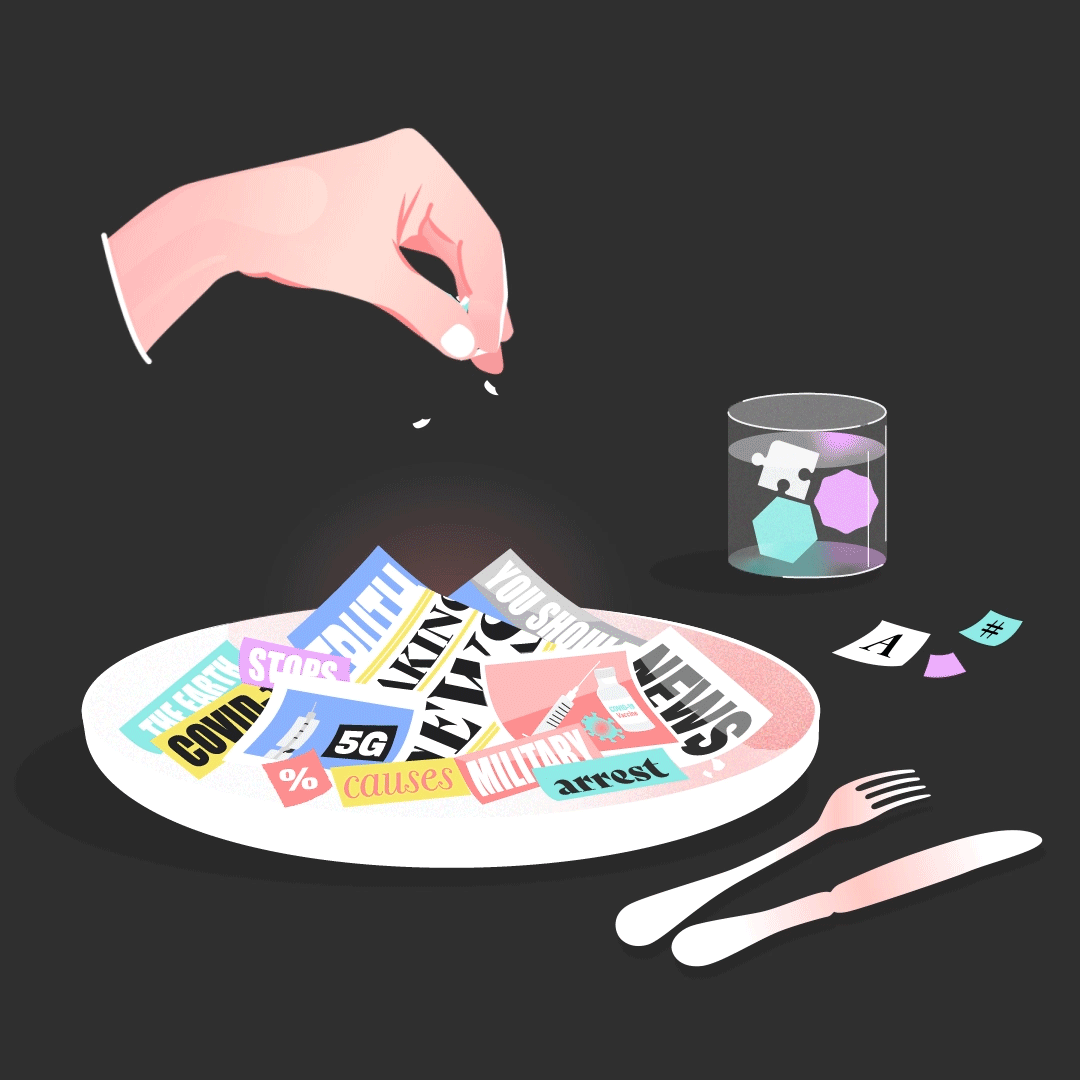
Welcome to the Conspiracy Cookbook, in this book we expose different secret recipes to create conspiracy theories and disinformation.
Here, we will explain the different ingredients needed in order to create your own manipulative dish. But first, let’s make sure you understand exactly what a conspiracy theory is, and where it might come from…
Simply put, a conspiracy theory is an explanation for an important societal event claiming the involvement of a powerful group or a person that secretly plotted to set this event in motion. It nearly always differs from the official explanation.
In times of uncertainty, and especially during societal crisis situations, there will always be an increase in conspiracy theories, because people are scared, they feel out of control, and they need a response to their anxieties. These feelings make them want to make sense of the situation, and to simplify it. This is an incredibly common human reaction, and one that isn’t unique to modern times.
People from all eras are likely to believe in conspiracy theories when faced with a societal crisis. Despite conspiracy theories being around for so many years already, they are becoming more worrisome now due to their ability to be amplified on the internet. Find out more about this in our later book, the Amplification Atlas!
Conspiracies satisfy specific motives, with three main needs and desires:
Most recipes for conspiracy theories follow the same logic. Essentially, conspiracy theories give easy answers to complex problems, creating epic battles between ‘good’ and ‘evil’, and giving Black-and-White answers to Grey situations. Four key ingredients are needed, to not only create the conspiracy theory, but also for it to be successful and have a large number of people believe in it.
Anti-vaxxers, flat-earthers, and biolabs in Ukraine are just a few conspiracy theories that apply this logic, but we could really use any examples.
These recipes are tasty to some people because they:
It was around the 3rd century BC that Greek philosophers discovered the Earth was actually a globe. But contrary to over two millennia of scientific consensus, one of the oldest conspiracy theories is growing a movement once again, a movement that believes the Earth is flat.
With the increasing use and accessibility of the internet, the flat Earth conspiracy theory flourished. YouTube allowed a swell of individuals to travel down a dark hole of flat Earth videos, interacting with like-minded people across the world. Their community has grown so big that they are not only just communicating online anymore, but are joining offline too, for ‘flat Earth conventions’ worldwide.
Flat Earthers' beliefs vary, some believe that the world sits still, flat under a Truman like globe, whilst others believe Earth to be an infinite plane. Most don’t believe in outer space, think the moon landing was staged, and that their theory is supported clearly in the bible. And whilst some believe that if the world is not a globe, global warming cannot exist, others agree that the evidence for it is strong.
In general, Flat Earthers are in agreement that we are being manipulated by scientists, NASA, and a global ‘elite’ to think that the Earth is a sphere. Although some believe the Jews are part of this alleged cover-up, others blame the Freemasons. At the surface, this conspiracy theory might seem harmless, however believing in it is merely a slippery slope into the belief of plenty of other more harmful conspiracies. Besides this, flat Earthers can find themselves ostracised by family and friends, and often become disconnected from their real lives, finding solace with their like-minded friends on the internet, waiting for the next flat Earth convention to take place.
In 2019, the World Health Organisation listed vaccine hesitancy as one of the top ten threats to global health. Whilst vaccination against measles saw an 80% drop in deaths between 2000 and 2017, rates have since increased, due to vaccine hesitancy and a decrease in immunisation. A disease that was almost entirely eradicated is causing fatalities once more. During the height of COVID-19, researchers suggested that the anti-vaccine movement could undermine efforts to end the pandemic. Although the end of the pandemic may be in sight, the anti-vaxx movement has drastically increased, bringing unlikely groups together, united over their blame towards the government for trying to control us.
Emotional stories and conspiracies built upon during the start of the pandemic, such as the new 5G technology causing COVID, set the tone for the infodemic that ensued, and only exacerbated anti-vaxxers and vaccine hesitancy once the vaccine was made available. But there has always been doubt around new technologies whenever they are released. In fact, conspiracy theories about 5G, and that it was responsible for the unexplained deaths of birds and trees, had been circulating for several years before the pandemic even began.
With building anxieties during the pandemic, amid ever-growing concerns surrounding technology, anti-vaxxers later claimed that the government were using vaccines to microchip the public. A key scapegoat used in this claim was Bill Gates. He was the perfect person for anti-vaxxers to blame, due to his roles as a technological innovator, capitalist entrepreneur and pro-vaccine philanthropist.
Conspiracy theories surrounding vaccines are harmful to those spreading them, and to others. Although some individuals unknowingly spread anti-vaccine misinformation, others did so with one goal in mind: profit. Find out more about profiteering anti-vaxxers in our Financial Fairy tales book!
During the war on Ukraine, Russia claimed that biological weapons were being developed in Ukrainian laboratories, with support and funding from the U.S. These biological weapons supposedly included ‘pathogens of dangerous infections’, and were to be spread by specially trained migratory birds and diseased bats.
Despite there never being any evidence to support these claims, Russian officials and state media have been using them since at least 2011. They are now using them as an attempt to justify their invasion of Ukraine, and spread false narratives that they were doing so to protect Ukrainians (and Russians) from a Nazi regime. Russia didn’t only accuse the U.S. of funding these biolabs though, but also made these claims about NATO and the UN, attempting to dangerously undermine international arms control agreements.
Their false claims were amplified by China's Ministry of Foreign Affairs and Chinese state media, as well as being promoted by QAnon and gaining support among far-right groups in the U.S. Popular American podcasters were also found to be repeating and promoting the claims for their own purposes, and the narrative was even embraced on Fox News. Although fact checkers worked hard to amplify that the claims were false, it is incredibly difficult to debunk a claim that has already spread around the world.
Of course not all conspiracy theories are created equally, and there are many more dishes to explore. The Conspiracy Chart highlights as many as possible, from those that are grounded in reality, to those that are completely detached. Head to https://conspiracychart.com to read more about the conspiracies you can see in this chart.

When you see a post on the internet that smells like a recipe from this cookbook, try to verify some basic information before you start eating. This is how to do it:
Was it posted initially by a reputable news source?
Was it posted or shared by a bot? Have a look at the individual’s profile, if you answer ‘yes’ to the following questions, there is a high chance the source may be a bot, generated by an algorithm:
• Does their username or handle have a mix of random letters and numbers
• Do they post over 70 times a day, but are an unverified account?
• Do they only re-share content, but post none of their own comments.
Does the account mainly share hateful or inflammatory content? If so, this account is probably a #HobbyHater, and they often like to use and share disinformation.
Don’t just read the headline! Before you even think about sharing anything on social media, you should ensure you have read the entire article.
As headlines are continuously created to be click-bait, they may not match up to the actual context of the article, they could be misleading, or even have absolutely nothing to do with the article itself.
Check the date. Old articles are often recirculated without having anything to do with current affairs. Also check the dates of the sources and statistics the article uses.
Firstly, is there even an author listed?
If you aren’t completely sure the author of an article is legitimate, see if you can find any other articles by them. If you can, do they look legitimate?
Beware of fake authors.
Images can often resurface years after they were first used, linked to a new story or article. You can check when an image first appeared on the web using platforms like Google, Bing, or TinEye.
Zoom into the picture to look for clues that the real location is not where the article says it is.
Use tips from Bellingcat to help debunk an image.
If the story is a big one, chances are it will have been reported on by a number of different outlets. Check how other news sites are reporting on it, is there an overlap in the facts and figures?
If you find no other platforms or outlets reporting on the story, there is a high chance it is fake. Still, make sure to check how balanced (or biased) the article is.
Check whether all the platforms reporting on the topic use the same (single) source material.
Reflect on why this article drew your attention. Did you read it purely because it appeals to you and you agree with it? Do you believe it because you WANT to believe it? We often filter information based on how positively it aligns with our already established beliefs. This can occur consciously, or subconsciously. Accepting information that reinforces our pre-established biases and disregarding any that gives us discomfort is a big factor behind the success of disinformation.
So, check your biases, question information you read, and always research further, before you hit that share or like button!

















































